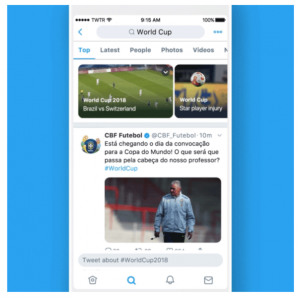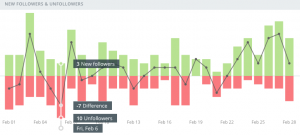If you’re like many business owners, you use email marketing to stay in contact with your customers and nurture leads. After examining internal data and numerous outside case studies, it’s clear that email is one of the most effective ways to build rapport, increase sales, and grow your business.
Globally, over 4 billion people use email to stay in contact with friends and brands. This broad reach means you’ll have no problem connecting with your target audience.
But the benefits don’t end there.
From a financial standpoint, email gives businesses an average return on investment of 4,440%! It’s easy to see that there are clear benefits to using email as a marketing tool, but you have to get it right.
The problem with this type of marketing is there are a ton of factors you need to take into consideration if you want to maximize your results.
Our focus today is on some of the most common mistakes people make when implementing email marketing. We will go over the mistakes, tell you how they can negatively impact your business, and reveal what you can do to fix these issues.
Let’s begin!
Forgetting to Push for More Signups
The first problem marketers run into is their list eventually becomes stagnant. It can feel discouraging when you’re sending emails to the same couple of hundred people every week, especially when there’s a noticeable dip in your open rate and conversions.
This problem stems from how businesses generate new leads. You have to push for more email subscriptions actively, or your list will remain stagnant. Imagine you have a list, but users have to navigate through 3 pages just to find the registration form. Do you think this tactic will get you more conversions?
The answer is; not likely.
Luckily, there are a few ways to fix this problem. First, we suggest putting an opt-in email subscription form on almost every page of your website. You can easily add the form to the sidebar of your website. Now, when someone lands on your blog, product page, or features section, they can sign up without navigating off the page.
It’s also possible to push for more signups by creating a lead magnet. Lead magnets are pieces of content or special offers that users get for subscribing. Some businesses create in-depth guides with checklists; others offer promotions, like 30% for first-time customers. The type of lead magnet you pick will depend on your industry, audience, and products.
Failure to (Quickly) Keep Your Promises
While we are on the topic of lead magnets, let’s talk about how failing to send them out can damage your reputation and cause a severe drop in conversions. Once someone subscribes to your list, they should get their lead magnet, or at the very least, a welcome email.
Consumers are subscribed to email newsletters from brands across all industries. You have to get their attention fast, or subscribers could skip over your emails in the future.
So, if someone signs up because they want your guide on fly fishing, for example, you should program a drip campaign to send out the lead magnet automatically. Once the user gets their content or offer, they can decide if they like the quality of your content and want to stay subscribed.
If you fail to keep your promises, you’re removing this vital step of the customer’s journey. They will assume that you don’t care and figure they shouldn’t either. The consequences could be devastating, especially if you’re fighting for every lead you can find.
Poor Email Deliverability
When people think about email as a marketing tool, they rarely consider the deliverability factor. You could have thousands of leads, but if only 10% of your messages are going through, you’re at a severe disadvantage.
The average email deliverability rate is 79.6%, which may surprise those who thought every email was landing in the recipient’s inbox.
Several factors can impact whether your emails are going to their destination. The first thing you’ll want to do is authenticate your email domain. If you fail to take this step, it’s easier for someone to impersonate your brand, resulting in more messages getting marked as spam.
Worse still, if someone manages to fool one of your customers and steals their data, do you think they would want to associate with your company again? They likely wouldn’t because of their poor experience with someone that was pretending to be you. These folks are also likely to tell others about their experience, which could reduce future conversions.
You should also avoid buying lead lists and keep your existing list clean with a scrub every six months. These steps will ensure that you’re only sending emails to people who want to contact your company.
We also think it’s crucial that you avoid spam and clickbait-style subject lines. Consumers will report your email as spam based solely on your opening line. Keep this in mind when you’re writing email copy and coming up with subject lines.
Missing Out on Personalization Opportunities
Finally, we want to talk about personalization. Showing users content that they can connect to is one of the quickest ways to boost your conversions. People will happily read what you have to say if they think it could positively impact their lives.
You can implement a personalization marketing strategy through your emails by segmenting your list. Essentially, segmentation is the process of dividing your leads based on interests, habits, and pain points.
Research shows that properly segmenting leads results in an average open rate increase of 14.31%. It all connects back to how your users see your emails. If they think you’re sending out the same exact message to all of your subscribers, you should rethink your personalization strategy.
However, if the user sees an email and thinks, “Wow, they know exactly what problem I’m facing and how to help,” they are more likely to open future promotions and content from your brand.
You can segment your leads by referencing your Google Analytics account. Look at how people interact with your brand and develop buyer personas that highlight traits in each group. So, if you have an online sporting goods store, you may want to segment your leads based on past purchases. You wouldn’t send an offer on hockey gear to someone that’s only purchased football equipment, right?
We also recommend allowing your users to self-segment. When you create an email signup form, include optional industry-specific questions that users can submit to self-segment. If we use our previous example, a business owner could ask their subscribers what kind of sports they like. If someone selects hockey, they are on the list for relevant offers.
Back to You
It’s clear that email marketing is here to stay. If any of the mistakes above resonate with you, there’s a good chance you have room for improvement. Use the advice offered here to fine-tune your campaign and get more leads, conversions, and brand engagement.
Digital & Social Articles on Business 2 Community
(64)







